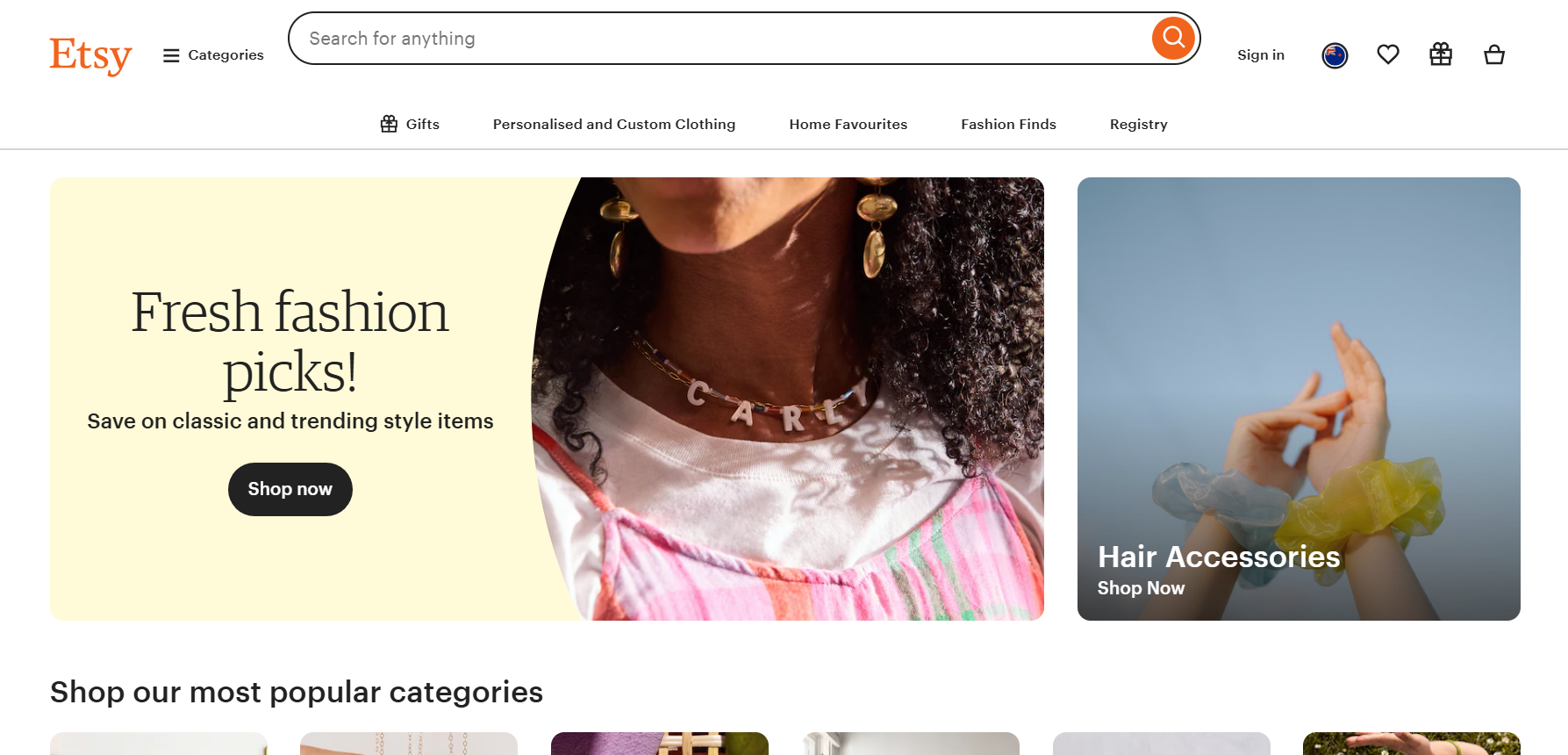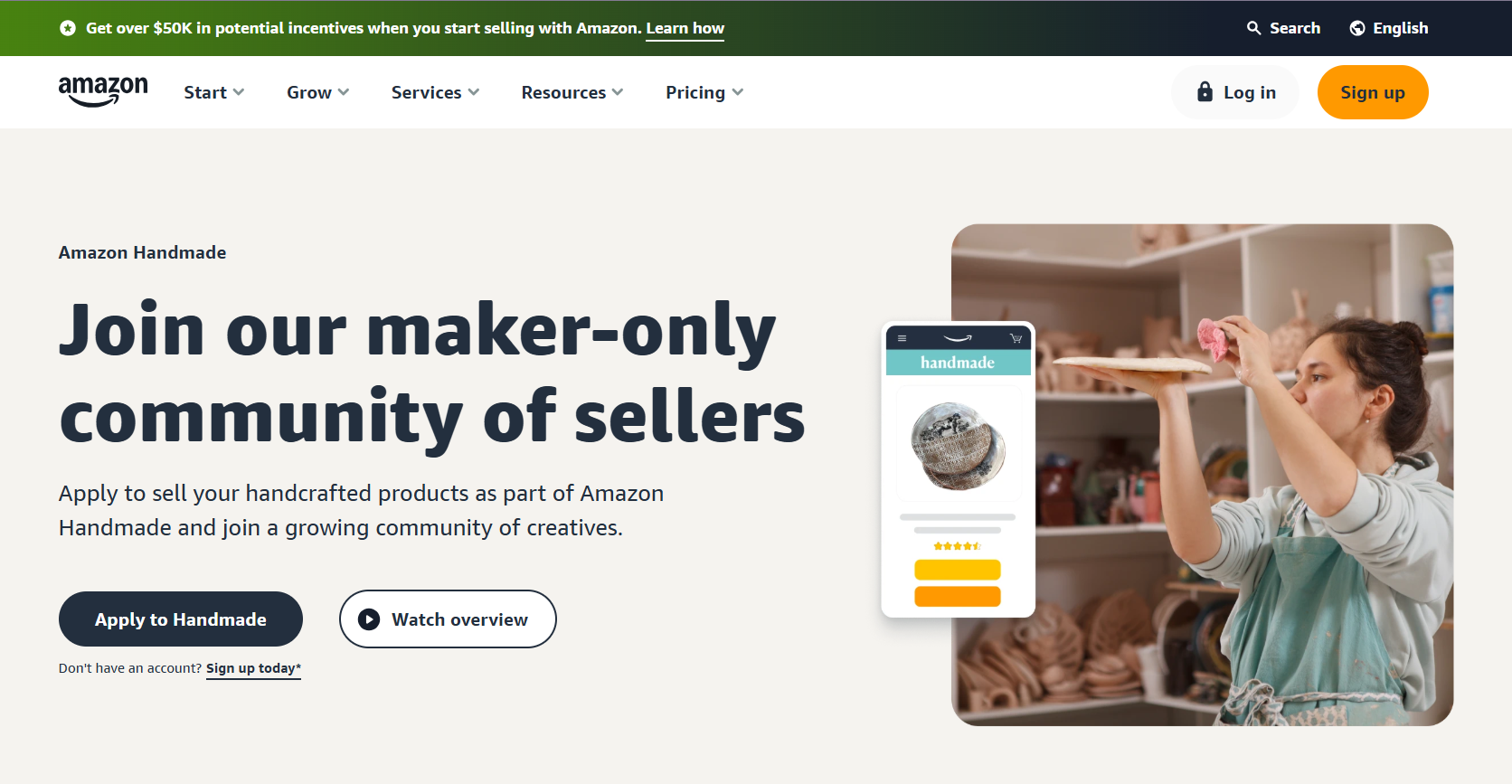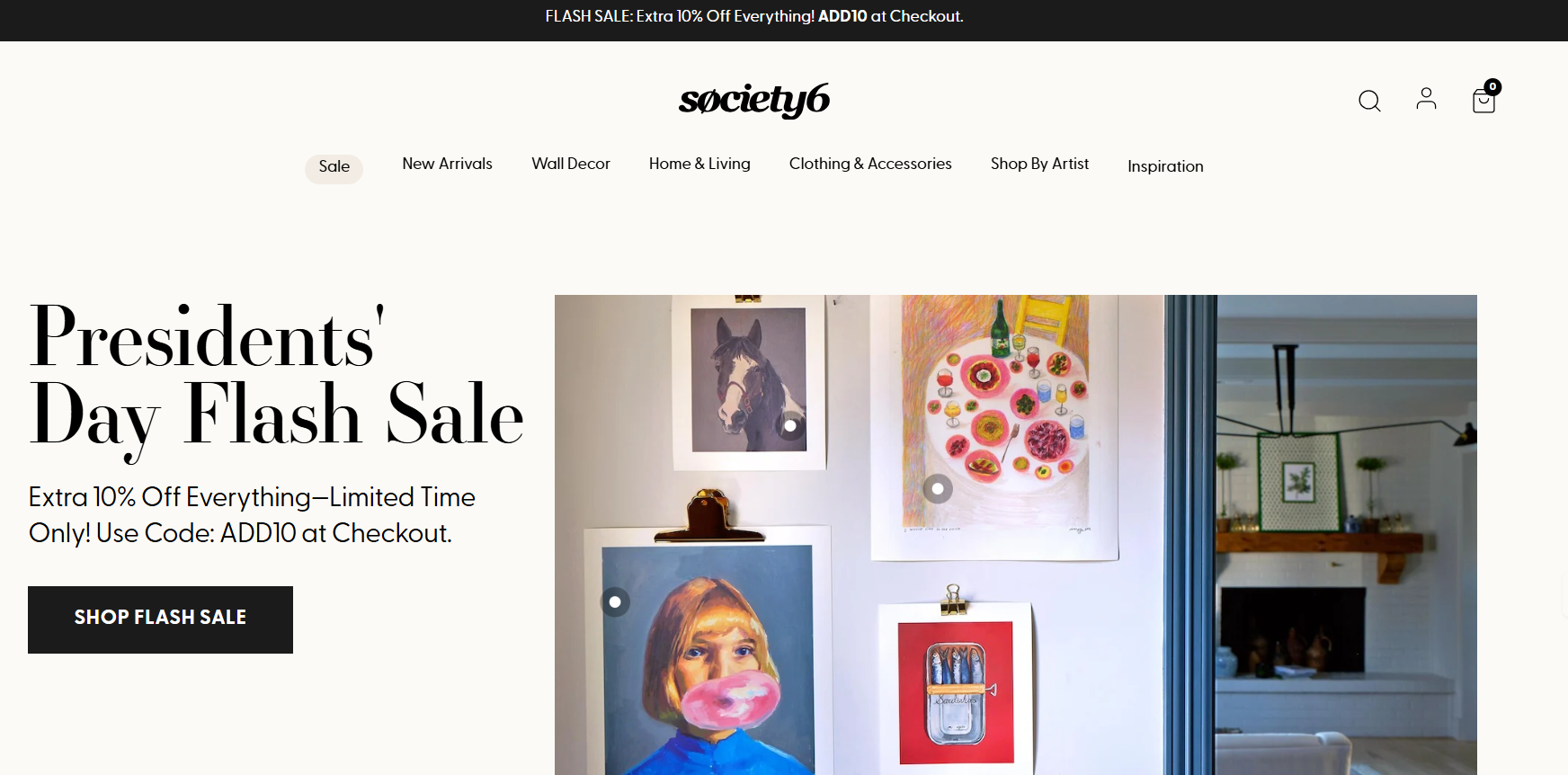The global handmade crafts market is expected to hit $918 billion by 2026. This is more than just a trend; it’s a growing industry. Finding the best online marketplaces to sell your handmade crafts can be tough but rewarding. It’s key to know the opportunities and challenges each platform offers.
Key Takeaways
- Etsy is a global leader for handmade and vintage items, attracting buyers who value unique, human-made products.
- Amazon Handmade and ArtFire offer a wider audience, thanks to their large customer bases. They help the artisanal crafts market grow.
- Online selling is popular, with 60% of crafters preferring it over physical stores.
- Knowing about fees, like Etsy’s profit percentage and Amazon Handmade’s 15% sales charge, is vital for your earnings.
- Good pricing and eco-friendly products can boost your success. Nearly 50% of buyers seek sustainable items on Etsy.
- Having your own website is important for control, with 66% of sales possibly happening on platforms with challenges.
- Social media is great for marketing, with 59% of crafters using it to increase visibility and sales. It helps build a community.
Understanding Online Craft Marketplaces
As an artisan, knowing the difference between online craft selling platforms is key to your success. Etsy stands out for its large niche audience, making it a top online handmade craft marketplace. It’s perfect for those who sell unique, handcrafted items. Amazon Handmade and eBay also help by reaching a wide range of customers.
Online shopping is growing, which is good for handmade seller sites. This growth is expected to continue in the online handmade market.
Today, selling personalized and sustainable products can give you an edge. This is because more people want these types of items. Using social media like Instagram and Pinterest can also help you reach more people.
| Platform | Active Buyers (millions) | Active Sellers (millions) | Listing and Transaction Fees |
|---|---|---|---|
| Etsy | 95.1 | 7.5 | Listing: $0.20, Transaction: 6.5% |
| Amazon Handmade | N/A | N/A | Referral: 15%, no monthly fee if approved |
| eBay | 135 (Global) | 18.3 | Varied by listing and sale types |
| Shopify | 700 | N/A | Starts at $29/month, $1 for the first 3 months |
Knowing the features, target audiences, and costs of these online craft selling platforms helps you choose wisely. Whether you make jewelry, home decor, art, or custom clothes, picking the right place can boost your success.
Get ready by looking into each platform’s reach, fees, and tools. This will help you start a successful business in the online handmade craft marketplaces.
The 8 Best Online Marketplaces to Sell Your Handmade Crafts
Choosing the right place to sell your handmade crafts online is key. Each platform has its own special features for different sellers and products. Let’s look at four major players in the handmade goods e-commerce world.
Etsy: The Leading Global Marketplace
Etsy is a top name in handmade markets, creating a special community for makers and buyers. It has over 96 million active buyers looking for unique items. But, sellers need to know about the $0.20 listing fee and a 6.5% transaction commission. Its easy-to-use site and big market presence are big pluses, but some might find the lack of brand control a minus.
Amazon Handmade: Reaching Millions of Customers
Amazon Handmade connects artisans with Amazon’s huge customer base, over 300 million users a year. It waives the $39.99 monthly Professional selling account fee, making it easier for small crafters to start. The catch is a 15% commission per sale, but it offers great exposure and Amazon’s shipping perks.
eBay: Vast International Exposure
eBay is great for both traditional and handmade goods, reaching over 130 million users worldwide. It attracts a wide audience, boosting your crafts’ visibility. You can pick between auction-style and fixed-price listings, tailoring your sales strategy.
Society6: Artist-Designed Wall Art, Home Decor, Tech, and More
Society6 is perfect for artists wanting to print their designs on quality products like wall art and tech accessories. It’s not just about selling; it’s about sharing personal expression. Society6 handles production and shipping, letting artists focus on design.
Shopify: Everything you need to sell. Build your online store with Shopify’s ecommerce software and easily sell in person with Shopify POS.
Cratejoy: Discover Unique Subscription Boxes for Every Interest
Faire: Online Wholesale Marketplace for Retailers & Brands
Redbubble: Awesome products designed by independent artists
When checking out these platforms, think about their fees, customer bases, and how they fit your crafts and business goals. Each platform has its own pros and cons, so picking the right one is important.
Choosing the Right Platform for Your Craft Niche
When you start selling handmade crafts, it’s key to know the marketplaces out there. Picking the right platform is not just about signing up. It’s about choosing wisely based on your products and the audience they appeal to.
Evaluating Platform Demographics
Looking for the best platform means understanding who buys what. Etsy, for example, attracts millions with a taste for unique items. Amazon Handmade, on the other hand, offers access to Amazon’s vast customer base, perfect for those who value convenience and trust. Knowing your audience is critical to success.
A niche-specific marketplace can be a goldmine. It connects you with people who truly appreciate your craft, turning browsers into buyers.
Understanding Market Fit
Your success online also depends on knowing your market. Each platform has its own strengths and weaknesses. Etsy’s analytics tools help you understand what customers want. Shopify and Amazon Handmade offer tools for marketing and growth.
Every platform, from Etsy to Amazon Handmade, has its perks. They offer visibility, payment options, and even different fees. By carefully choosing, you set your business up for success in the handmade market.
Setting Up Your Online Craft Store
Starting your online craft store is thrilling. It’s your chance to sell handmade goods and connect with many people. The global handicraft market, worth $930.4 billion in 2024, shows great opportunities for craft makers.
First, pick a platform that fits your brand and products. Setting up your store involves a few steps. Start by making your store look like your brand. Use great photos and clear descriptions to draw in customers. This can increase traffic and sales by up to 96%.
Make your product listings stand out. Show each item in a way that highlights its special features. Remember, detailed images can bring in 95% more visitors.
Also, make sure your store works well on mobile devices. 76% of shoppers buy from their phones. Offer various payment options to make shopping easy and boost sales.
| Cost Component | Details | Impact on Business |
|---|---|---|
| Startup Costs | Licensing, Equipment, Marketing | The initial financial outlay required to launch |
| Direct Costs | Craft supplies, Shipping | Recurring costs affecting production |
| Overhead Costs | Software subscriptions, Insurance | Essential for operational management |
| Pricing Strategy | Markup on production costs | Directly influences profit margins, which can range from 20% to 100% |
Lastly, make sure your store has strong support behind it. Keep an eye on website traffic and customer feedback to improve. This helps you stay ahead and keep customers happy.
The goal is to build a store that grows your brand and builds strong customer ties.
Pricing Strategies for Handmade Items
Setting the right prices for your handmade crafts is key to success online. You need to calculate costs like materials, labor, time, and overhead. This way, your items will stand out and sell well on websites for artisans.
Cost Calculation Methods
First, figure out the real cost of your items. This includes your time and the materials you use. Remember, you should get paid fairly for your work. For example, if you make something in 40 minutes at $15 an hour, you should charge about $10.
Don’t forget to add in other costs like marketing and website upkeep. Spread these costs over the number of items you plan to make. This helps you set a fair price for each item.
Competitive Price Analysis
Looking at what others charge can help you price right. It’s important to know what’s selling well on sites like Etsy. But, be careful not to undercut yourself too much. Many sellers price their work too low, which can hurt their profits.
Profit Margin Considerations
It’s important to make a good profit on your handmade items. Aim to sell each item for 2.5 to 3 times its total cost. This way, you can keep making money without breaking the bank. Also, remember that people are willing to pay more for things they value.
| Cost Component | Calculation | Example |
|---|---|---|
| Materials | The sum of per-unit costs | $20 (total material costs) |
| Labor | Hourly rate x hours spent | $30 (1.5 hours at $20/hr) |
| Overhead | Total overhead/annual product output | $2.83 per item |
| Retail Price Suggestion | The mark-up on the total cost | $50 – $60 |
Try out different prices to see how they affect sales. A small price hike might cut sales by 10% but boost your earnings. Keep an eye on your sales data to adjust your prices wisely.
Marketing Your Handmade Products Online
Starting your online marketing journey is exciting. But remember, success in the handmade craft world needs a mix of things. You must have a strong online presence, a clear brand, and connect well with your customers.
Building Your Brand Presence
The craft market is growing fast, with billions expected in value soon. Creating a unique brand that speaks to your audience is key. Think about what makes your brand special and what values you stand for. A strong brand attracts people, builds loyalty, and earns trust.
Photography and Product Presentation
Good photography is essential for selling handmade crafts online. Your photos should be clear and show off your crafts’ quality. Visuals are key in online sales, so investing in quality photos is smart. Use Instagram and Pinterest to showcase your work, as they love visuals.
Social Media Integration
Social media is more than just ads; it’s about building a community. Sites like Facebook Marketplace and Instagram help you connect with customers. Share behind-the-scenes, new product updates, and talk to your followers. Also, use social media ads to reach more people and grow your brand.
In short, online marketing, great product photos, and smart social media use can make your brand shine. This approach not only boosts sales but also builds a strong bond with your audience.
Managing Orders and Inventory
In the world of online craft sales, knowing how to manage orders and inventory is key. It helps you meet customer needs and keep your business running smoothly. Whether you’re new or experienced, understanding these steps is vital.
Order Fulfillment Process
Order fulfillment is more than just sending out products. It starts when you receive an order and ends when it reaches the customer. Being fast is important, as sites like Etsy and Amazon Handmade rely on quick service for good reviews.
Using technology to scan items and pack orders efficiently can make your shipping better. This improves both speed and accuracy.
Inventory Tracking Systems
Keeping track of your handmade items is essential. Good systems help you match stock with sales to avoid running out. Shopify and Big Cartel offer these tools for $15 and $30 a month.
These tools let you see your stock levels in real-time. This helps you make smart choices about when to restock and how to handle seasonal changes.
Shipping Solutions
Finding the right shipping for your craft business is important. You need to consider the size and weight of your items to save money. eBay and Amazon have shipping solutions that are easy to use.
Features like tracked shipping can make your customers trust you more. It shows you care about their orders.
By using these methods, you can make sure your business runs smoothly. This leads to happy customers and a successful craft business.
Building Customer Trust and Relationships
Building customer trust in e-commerce is key for online marketplaces, like those for handmade goods. With B2C online sales in the US set to hit $2.1 trillion by 2024, there’s a big chance for craft sellers to grow. It’s all about building handmade goods buyer trust.
Market research helps sellers know what craft buyers want. This lets them make their shops meet those needs. Also, having a unique value proposition and a user-friendly design are musts to attract and keep buyers. Etsy, for example, uses direct talks and community focus to connect artisans with buyers.
It’s vital to have strong security like secure payments and data encryption to protect users. Clear policies and great customer support also help build trust. They make buyers feel valued and safe in their transactions.
It’s not just about selling. Engaging with customers through feedback, quick responses, and solving problems helps build loyalty. Rakuten’s loyalty points show how rewarding repeat buys can keep customers coming back.
| Strategy | Benefits |
|---|---|
| Secure Payment Gateways | Enhances buyer trust and security |
| User Engagement | Promotes brand loyalty and repeat business |
| Feedback Mechanisms | Improves product offerings and customer service |
| Loyalty Rewards | Encourages repeat purchases and customer retention |
In short, success in online craft sales comes from understanding and using the basics of customer trust in e-commerce and good relationship management. By focusing on these, sellers can draw in buyers and build a loyal customer base. This is key for long-term success.
Conclusion
(The Best Online Marketplaces to Sell Your Handmade Crafts)
In today’s digital world, online stores for artisanal crafts are booming. Etsy is a huge platform, with 97.3 million active buyers worldwide and making $2.748 billion in 2024. Choosing where to sell your handmade items is a big decision. Each site has its own features and costs.
Etsy offers two plans, including the Etsy Plus for $10 per month. It helps over 9 million active sellers to sell easily.
Amazon Handmade reaches 80 countries, giving sellers a huge audience. Shopify is great for growing your business with flexible tools. Using online stores well means showing off your products with great photos and stories.
Good photos and stories can really help sell your items. Using hashtags and social media can also help get more people to see your work.
Success in online craft sales means always improving. Use analytics to see what customers like. Also, making unique items is very popular now.
Managing your stock, marketing well, and caring for customers is key. Use these tips, stay true to your craft, and your online business will grow.
FAQs (Best Online Marketplaces to Sell Your Handmade Crafts)
What are the best online marketplaces to sell handmade crafts?
The top places to sell your crafts are Etsy, Amazon Handmade, eBay, and Society6. Each site targets different markets and offers unique benefits for sellers.
How do I understand which online craft marketplace is suitable for my products?
To pick the right place, look at each site’s demographics and the customers they attract. Also, check their fees and how they match your craft and business goals.
How can I evaluate the platform demographics for selling my crafts?
Study each platform’s user base and their shopping habits. See if they want your type of crafts. This helps find the best site for your target audience.
What factors should I consider when setting up my online craft store?
Choose a marketplace that matches your brand. Make sure your product listings are detailed and your payment and shipping options are clear.
How should I price my handmade items for online sales?
Price your items by adding up material, labor, and overhead costs. Look at what others charge too. Set prices that show your crafts’ value but are also competitive and profitable.
What are the best strategies for marketing my handmade crafts online?
Build a strong brand and use great photos. Show your products well. Use social media to connect with customers and run ads to get more seen.
How can I manage my orders and inventory effectively?
Use a system to track your stock and manage orders well. Pick reliable shipping with tracking to serve your customers best.
What are the keys to building customer trust and relationships in online craft selling?
Offer quality products and great service. Be open and quick to respond. Personalize your interactions to build trust and lasting relationships with buyers.













